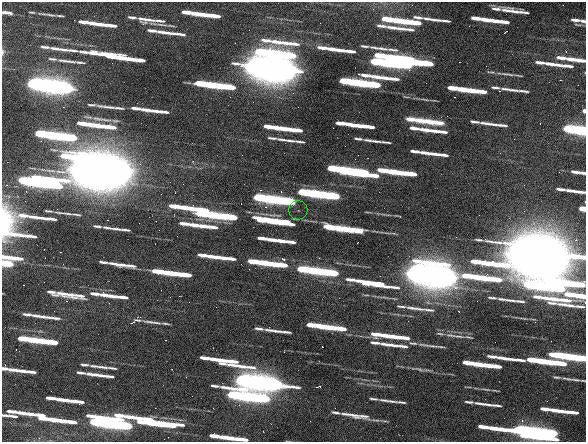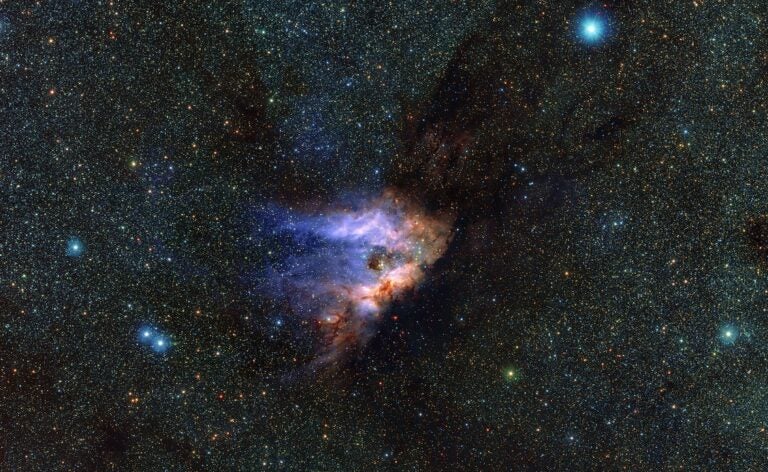New data has led to a significant reduction in the position uncertainties during asteroid 2007 WD5’s close approach to Mars on January 30, 2008. As a result, the impact probability has dropped dramatically, to approximately 0.01 percent or 1 in 10,000 odds, effectively ruling out the possible collision with Mars.
The best estimate now is that 2007 WD5 will pass about 26,000 km from the planet’s center (about 7 Mars radii from the surface) at around 4:00 am PST on January 30th. With 99.7 percent confidence, the pass should be no closer than 4000 km from the surface.
The sequence of updates over the last few weeks has been typical of past potential impact scenarios, with the odds of impact initially surging and later plummeting towards zero. Early on, the uncertainty region is very large and the probability of impact is rather low.
As the uncertainty narrows, but still includes the planet, the probability initially increases. But eventually, as in this case, the uncertainty region shrinks to the point that it no longer overlaps the planet, and the probability of impact begins a precipitous decline.
This rise and fall of the computed hazard was most notably seen in December 2004 when asteroid 99942 Apophis briefly reached a 2.7 percent chance of impact with Earth in April 2029. In every case, the height and the timing of the peak probability, and the subsequent decline, cannot be known until the uncertainty region has shrunk to the point where it no longer intersects the planet.
NASA’s Spaceguard Survey continues searching for Near-Earth Asteroids such as 2007 WD5, endeavoring to discover 90 percent of those larger than 1 km in size, a goal that should be met within the next few years. Each discovered asteroid is continually monitored for the possibility of impact. For 2007 WD5, these analyses show there is no possibility of impact with either Mars or Earth in the next century.










